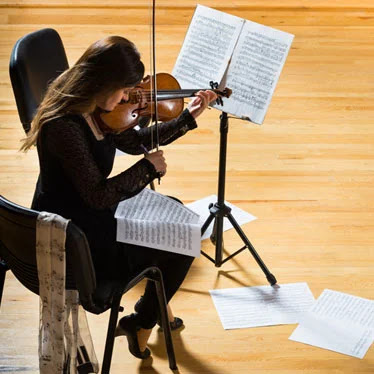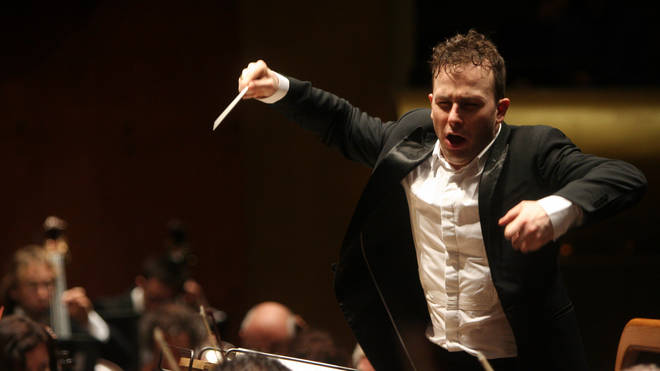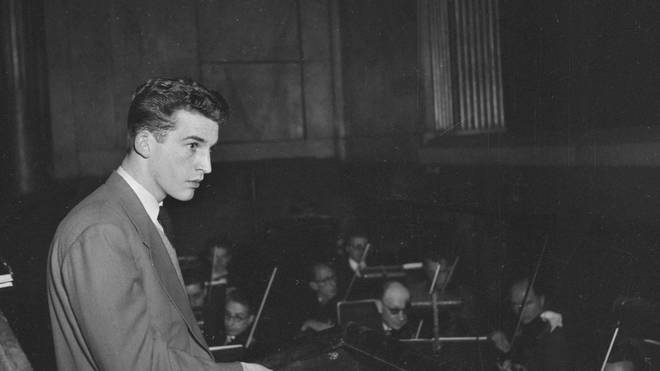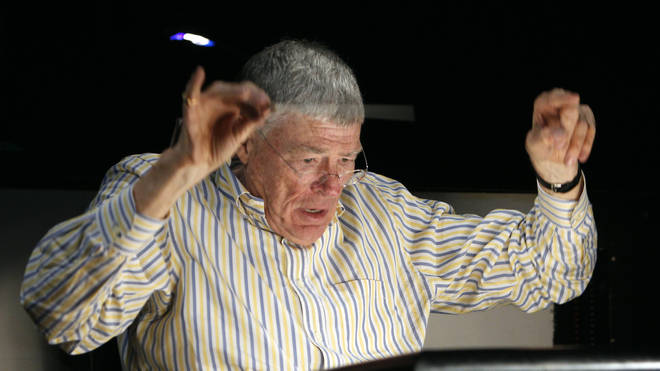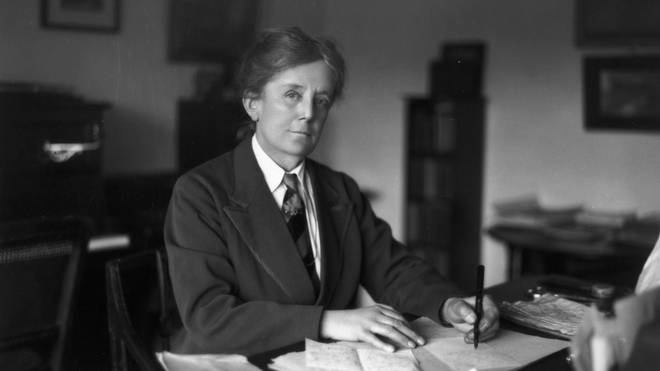Published by StringOvation Team on March 20, 2019
Ask most people what they consider a romantic song, and you'll get answers like John Legend's "All of Me" or most anything from Marvin Gaye. But, as you know, the capital "R" in Romantic music is works composed in the Romantic style, which arose during the Romantic Period. But what characterizes Romantic Period music? How did it evolve? These are some of the questions we'll answer here.
At its core, composers of the Romantic Era saw music as a means of individual and emotional expression. Indeed, they considered music the art form most capable of expressing the full range of human emotion. As a result, romantic composers broadened the scope of emotional content. Music was expected to communicate to the audience, often by using a narrative form that told distinct stories.
Romantic composers prioritized the emotional or narrative content of the music above its form, which is why they broke so many of the classical composers' rules. Romantic composers didn't reject or break with the musical language developed during the Classical Period. They used its forms as a foundation for their work but felt unconstrained by them.
Beethoven is the originator of this approach. He lived and worked during the transition from the Classical to the Romantic Period, and was an inspiration to the Romantic composers who came after him.
Beethoven's symphonies "shift[ed] the terrain" for what a symphony could be. He also demonstrated coming Romantic Era characteristics, such as composing auto-biographical works and naming movements, such as the third movement of his String Quartet No. 15 in A minor, Op. 132 (Song of Thanksgiving to the Deity from a convalescent in the Lydian mode).
Ultimately, Romantic composers would evolve and expand the formalist Classical structure into a more complex, rich musical language.
Origins and context of the Romantic Period
Music was a bit late to the Romantic Period party. Historians argue over the start and end dates of the Romantic Period. Some date it as the 19th century, while others place it in the late 18th century. This is true for Romantic literature. Works like William Blake's Songs of Innocence (1789) and Samuel Coleridge's Kubla Khan (1797) are considered examples of early Romantic poetry. The Romantic Era hit its stride in the middle 1800s, encompassing all the arts and popular thought of the time.
The Romantic emphasis on individual self-expression grew out of the political ideas of individualism born during the Age of Enlightenment. However, the Romantics rejected that age's emphasis on logic and rationality. These ideas were as constraining as the rules regarding Classical music forms. They also rebelled against the hallmarks of the Industrial Revolution, such as mechanization, mass production, and urbanization, which were seen as contrary to their vision of an idealized, natural state of being.
Much of Romantic Era art, including music, also reflected the tension and nationalism of war and revolution that swept across Europe from the French Revolution (1789) through the mid-century revolutions and on to the national unifications in the 1870s. Examples of this include the sculpture Departure of the Volunteers on the façade of Paris's Arc de Triomphe, which alludes to soldiers both of the French Revolution and the Napoleonic Wars; and Spanish painter Francisco Goya's paintings depicting Spanish resistance to Napoleon.
These events, ideas, and atmosphere directly contributed to the four primary artistic trends seen in Romantic compositions.
Four primary artistic inspirations of Romantic Era music
Now that you understand the context in which Romantic music developed, it will be easy to understand why these are the artistic themes (defined more broadly than the strict musical sense of "theme") that continually appear in works throughout the period.
Conveying extreme emotional states, whether auto-biographical, taken from a literary character or situation or just a representation of being human.
Exploring nature, particularly its wilder aspects, such as using musical techniques to imitate the sounds of storms or evoke the atmosphere of a dense, mysterious forest.
Fascination with the supernatural as a reaction to scientific advances, that both demystified old beliefs and created uncertainty about where science might take humanity.
Incorporating folk music or stories as a means to proclaim or reclaim national pride.
These four themes aren't clearly delineated, as you can find many or all of them incorporated into a single work. One of the ways Romantic composers did this was by writing pieces inspired by literature. This method gave a composition with both a narrative and emotional framework for the composer.
Mendelssohn's scherzo from A Midsummer Night's Dream
One last – yet critical – artistic inspiration developed in the Romantic Era isn't thematic, but highly personal: The composer as artiste and virtuoso. Romantic composers were often more than just composers. They were likely to also be performers and/or conductors. The virtuoso had both extraordinary technical proficiency and widespread acclaim. Paganini, Liszt, and Brahms are all excellent examples of the Romantic virtuoso.
The origins of the musical virtuoso are both artistic and practical. Romanticism is about self-expression, particularly through an artist's self-expression. Thus, Romantic composers felt free to strain and twist the Classical musical forms in increasingly personal ways. Today we call it "branding." Yet even then, Romantic composers were searching for a way to develop their voice through their music, one which was recognizable to audiences.
Composers of the time had more personal, creative freedom because they no longer worked under the noble patronage system that defined the Baroque and Classical Eras. Composers and musicians no longer worked at the pleasure of a duke or prince. The Industrial Revolution lead to a population boom, and many people were living in the growing cities. A broad middle class developed that had some disposable income and time to appreciate the arts. The artists followed the people, performing at festivals and other public concerts. The arts centers had moved away from the castles in the countryside to the cities.
In short, Romantic composers could find popular and financial success by composing audience-pleasing works. However, this also led to an artistic tension that remains today: The degree to which the composer gave full expression to their personal, artistic motivations (the artiste side) or whether they restrained themselves to please ticket-buying audiences. This rise of the musical virtuoso is also one reason why the Romantic Era saw the growth of the music critic, like E.T.A. Hoffmann. Music critics helped laymen audiences navigate this new artistic world.
How Romantic Era music separated itself from Classical music
he language of Romantic Era music didn't break with its Classical predecessors so much as it expanded its vocabulary and felt free to ignore Classical formalism. For example, Schubert's Unfinished doesn't confine itself to traditional eight-bar phrasing.
Nor did composers feel constrained to limit a work's exploration of different keys, as evidenced in Mahler's Symphony No. 2.
In addition to breaking existing rules, Romantic composers also developed new techniques or reinvigorated lesser used ones to express a more extensive array of emotional and narrative states. They used more extended melodies, broader ranges of tone, pitch, and tempo – more sophisticated harmonies.
Chromatic harmonies were making greater use of semitones and unusual chord progressions.
Melodies associated with an external reference, like a character or emotion being expressed. Wagner pioneered this idea with the leitmotif.
Not relying on cadence to resolve a passage, but allowing for "unending melody."
Use of rubato, adjusting tempo to reflect the level of emotional intensity the music should convey at that moment.
Increased tempos and complicated rhythms that demanded extraordinary precision and technical skill to be performed.
Greater use of techniques like sul ponticello (bowing near the bridge) and sul tasto (bowing near the fingerboard).
Romantic composers took advantage of a variety of mechanical innovations to explore richer dynamics and tones. Specifically, improvements in instrumental construction, as well as the creation of new instruments. The broader range and improvement of instruments allowed Romantic composers to express more precise gradations of volume and tone. This included longer, soaring crescendos and diminuendos. It also allowed them to make greater jumps in tone and volume, creating a new sort of discordance.
Changes in Instruments during the Romantic Period
The piano significantly evolved during the Romantic Period. For example, the number of physical keys expanded from five to eight octaves. The materials used to construct piano frames shifted from wood to metal, and the durability of the metal used to manufacture its strings improved. These improvements enriched the pitch range and tonal quality of the piano.
Similarly, the materials used to construct woodwind instruments also improved and expanded their musical quality and variability. Innovations, such as developing the valve for brass instruments, also contributed to a more abundant variety of sounds. As did the invention of entirely new instruments, like the Wagner tuba.
However, one of the most significant changes to instrumentation during the Romantic Era wasn't the nature of the instruments individually, but changes in the instrumentation of the works.
Changes to the orchestra during the Romantic Period
A critical means of expanding the expressiveness of the music – primarily through tonal color, broader dynamics, and richer harmonies – was by increasing the number of instruments required to perform the composition. An extreme example of this is Mahler's Symphony No. 8 in E-flat major (Symphony of a Thousand), which requires two choirs and 120 musicians, including over 70 string musicians.
Orchestras from the Classical Era typically had around 30 musicians. The orchestra continued to grow and evolve throughout the Romantic Period, settling into the orchestra we know today.
As alluded to above, the wind and brass sections grew through the addition of a variety of instruments, such as the piccolo and contrabassoon, both of which greatly expanded the tonal range of the music. The percussion section also saw numerous instruments added, from bass drums to the triangle.
The string section also expanded. It remained comprised of the same four instruments: violin, viola, cello, and double bass. However, the number of each string instrument increased. Enlargin the number of strings allowed for the creation of more subsets within the string section. Romantic composers would use different configurations of small groups of strings to deepen the texture and contrasts within a work.
Another orchestral innovation of the period was intermittent use of non-traditional instruments. Say, cannons needed for Tchaikovsky's 1812 Overture as one extreme example.
An expanded orchestra was needed to perform the longer, more dramatic symphonies from the Romantic Era. While the symphony exploded to new intensity during this time, the period is also notable for composers creating a variety of types of "miniature" works.
Changes in musical forms during the Romantic Period
We've seen that formal Classical structures, such as composing symphonies with only four movements, were set aside by Romantic composers. They also composed single-movement works in a variety of distinct forms:
The etude was a short composition intended to both showcase virtuoso skill and as a training exercise for students. Paganini's 24 Caprices for Solo Violin falls into this category, as do many of Chopin's works for the piano.
The prelude, used in earlier eras to introduce a more complete work, was composed as a stand-alone work. Romantic composers did the same with the overture, such as Tchaikovsky's Romeo and Juliet.
The impromptu was a short piece meant to sound as if it was being improvised at that moment. As such, impromptus were typically single instrument works. Most impromptus were written for the piano, yet can be arranged for string instruments.
There were also many formats originating from national or folk music, such as the German lied, Polish polonaise and mazurka, and Viennese waltz.
Another important sub-genre of Romantic composition was intended to tell a specific story or paint a particular scene – program music, which may be a single movement or may have multiple movements.
Rise and scope of program music in the Romantic Period
Program music is music that tells a discrete story. It could be a story from the composer's life or his imagination. Berlioz's Symphonie Fantastique: An Episode in the life of an Artist, in Five Parts, was the detailed recounting of the composer's unrequited love for a famous actress of the day. Each movement is named:
Passions
A Ball
Scene in the Fields
March to the Scaffold
Dream of a Night of the Sabbath
As you can tell from the names of the movements, the arc of this story doesn't go well for the artist. Berlioz handed out programs at the performances to explain the story.
In other cases, the story was taken from literature, mythology, or local folklore. Dvorák's The Golden Spinning Wheel is a work based on a Czech poem that tells the story of doomed love and murderous women.
The assumption of program music is that it must have program notes to share with the audience and explain the work. That may have been true when it first gained its greatest popularity during the Romantic Period, but handing out notes isn't the defining characteristic of program music. In part because program music didn't have to tell a narrative story, but could be used to evoke the spirit of a time or place.
The symphonic or tone poem, a popular form of program music from the Romantic era, was intended to paint a scene where it transports the listener, which may or may not be a narrative story. For example, Sibelius composed numerous tone poems from old Finnish mythology, but composed others meant to invoke the spirit of his country and inspire patriotism, such as Finlandia.
Thus, Romantic Era tone poems run the full gamut of Romantic Era inspiration, from sharing intense emotional journeys, re-telling stories from Greek mythology or European literature, exploring fantastical settings (both natural and supernatural), and as odes to a country or culture.
Nationalist expression in Romantic Period music
Sibelius's Finlandia is an example of overt nationalism in Romantic music. In some cases, the work wasn't meant as a patriotic song per se but explicitly drew on folk music traditions the composer wanted to highlight. During the Classical Era, which prioritized the universality of strict, logical forms including strains of folk songs in music composed for nobles, would have been seen as provincial – at best. However, the self-expression popular during the Romantic Period often came out as patriotic love for local traditions during a time of war. Liszt's Hungarian Rhapsodies exemplify this approach.
One need not have been of a particular nation or ethnicity to include its music in new works. German Protestant Brahms turned to Hungarian-Jewish violinists to explore Hungarian themes he used in his Hungarian Dances. Dvorak was hired as Music Director of the National Conservatory of Music of America in part to develop an American classical musical language based on American folk music. His New World Symphony was the result.
The approach of using lands foreign to the composer as inspiration was akin to the nationalist trend and called "exoticism." The distinction between exoticism and nationalism could get blurry. Verdi's Aida, a story placed in Egypt, was commissioned by Cairo's Royal Opera. Puccini's Turandot, based on a commedia dell'arte play written in the 18th century, was set in China.
Exploring Romantic Composers and Their Works
We've covered a number of Romantic Era composers and some of their works. As an artistic epoch spanning anywhere from 80 years to slightly over a century, it spawned a huge volume of amazing composers and music. We named our Spotify list of Romantic Era music "20 Hours of the Best Music from the Romantic Era," and it covers a lot! You'll see we broke it up by form, from symphonies to tone poems through concertos and string ensembles and closing off with the operas and ballets.
If you prefer to start with the "must-know" list of Romantic Era composers, then check out this list of ten of the most influential. You'll find some composers already discussed, plus a few others. For each composer, we've also linked one extraordinary performance of one their most important works.
Romanticism evolves to its logical conclusion: Post-Romanticism
As the foundation of Romantic artistic ideas was personal expression and rule-breaking. It's not surprising that the musical style continued to evolve in significant ways, and by the late 19th century, composers were becoming more abstract in regards to the atmosphere and sentiments they wanted to express – a musical form of Impressionism. They were also starting to break the "rules" of the Romantics by returning to Classical forms inspired by popular Romantic themes of mysticism and the grotesque. Mahler is a prime example of a composer who bridges the Romantic and Post-Romantic Eras. Eventually, the rule-breaking pioneered by the Romantics evolved to the Modernists and Post-modernists, like John Cage, who seems to have rejected the idea of aesthetic rules entirely.
It's no wonder the music of the Romantic Period, with its expressiveness and penchant for telling dramatic stories, remains one the most popular eras of classical music.
Mendelssohn's scherzo from A Midsummer Night's Dream

